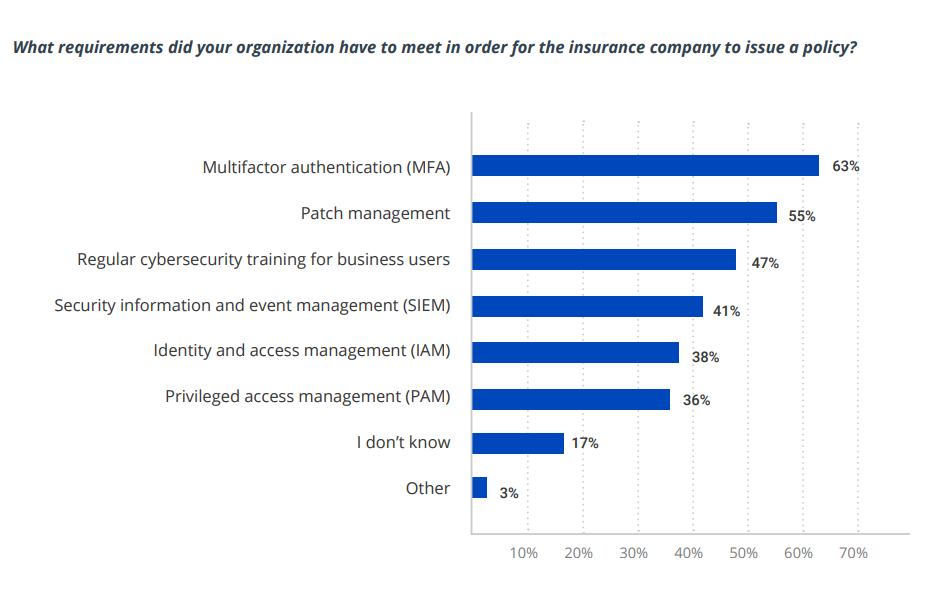If you think embedded insurance is the only hot thing in insurtech these days, we’ve got a surprise in store for you: While it’s true that startups that help sell insurance together with other products and services are enjoying tailwinds, there are plenty of other opportunities in the space, several investors told TechCrunch+.
You see, insurtech startups often need to take into account the myriad rules and regulations in place when they seek to innovate and embed insurance into products, which might make it difficult to pull it off. And given the current emphasis on achieving cost efficiency to extend runways in the broader startup ecosystem, it appears investors are open to insurtech startups that can build a sustainable business model, regardless of it including embedded insurance.
“Insurtech startups that do not offer embedded insurance, and rather provide other innovative solutions will still attract VC funding this year, especially if they can show cost-efficient and sustainable growth,” said Nina Mayer, a principal at Earlybird.
And according to David Wechsler, a principal at OMERS Ventures, “having an embedded strategy is not required for venture funding.”
Meyer added that there is particular interest in products that go beyond embedded insurance. “We are generally open to startups innovating any part of the value chain as long as the problem and market are big enough.”
This focus on cost efficiency instead of growth at all costs is driven by the same factors that affect startups more broadly. “It’s been a turbulent few months for all tech sectors, including insurtech,” said Stephen Brittain, director and co-founder of Insurtech Gateway.
There’s another reason why fundraising is harder for insurtech founders in 2023. Wechsler said, “Many firms who dabbled in insurtech (A.K.A. “tourist investors”) have left the space. This makes it much more challenging to close subsequent rounds.”
On the flip side, he predicts that corporates with venture capital arms that are “committed to the insurance sector will likely step up their involvement.”
This also seems true more broadly of venture funds with a strong insurtech thesis. “We are still bullish on insurtech and we have been active in 2023,” said Hélène Falchier, a partner at Portage Ventures.
But investors are being careful to not put all their eggs in one basket. “Beyond embedded insurance, we are also particularly excited by solutions tackling claims prevention or underwriting in verticals such as climate or cyber,” Mayer said.
Artificial intelligence will likely take longer to demonstrate its full potential for the insurance sector, but its current applications are already being tracked actively by venture capital funds.
Talking about generative AI and insurance, Astorya.vc’s founding partner, Florian Graillot, reported seeing a lot of enthusiasm around that topic. He thinks that early use cases may center on customer service, but is certain that more will follow.
“There is a lot more to expect from these generative AI solutions not only to smoothen the engagement with customers, but also to get a sense of customers’ risks, collect documents in the claim process, or maybe deliver reporting to the regulator. We are clearly in the early days, whatever the industry!”
Read on to find out what insurtech investors think about where the sector is heading in 2023, why they feel IoT and parametric insurance are a hot opportunity, how Apple will change the game if it ends up launching its insurance product and more.
We spoke with:
- Florian Graillot, founding partner, Astorya.vc
- Hélène Falchier, partner, Portage
- Stephen Brittain and Robert Lumley, directors and co-founders, Insurtech Gateway
- Nina Mayer, principal, Earlybird
- David Wechsler, principal, OMERS Ventures
Florian Graillot, founding partner, Astorya.vc
Embedded insurance is growing in popularity as more companies find ways to bundle insurance products with their offerings. How important will it be for insurtech startups to have an embedded insurance product to attract funding this year?
It’s true we’ve seen a lot of insurtech startups rebranding themselves towards that positioning. I’d even say it became a buzzword. But there are few players really offering third parties a way to seamlessly add insurance solutions to their customer journeys (that’s how I would define embedded insurance).
I believe the time is past when claiming such a positioning was enough to raise money. Investors have matured and the market knows B2C and embedded insurtech are two very different companies. Hence, you cannot switch from one to another overnight.
But for startups that have the right balance between tech/product and insurance, there is a huge opportunity, as more and more platforms, e-commerce and marketplaces are looking for additional revenues on their existing customer base. That’s what such insurtech startups can offer them! We have long been pushy on such an indirect distribution, having invested in four embedded insurance startups in property and casualty, bancassurance, life, and SME insurance.
How has your approach to the insurtech industry changed since the last time we spoke in Q3 2022?
Since astoryaVC’s inception, we have been investing in tech-based startups and have done a lot of B2B / enterprise software deals in the insurance space. That hasn’t changed. And the current market is rather reinforcing our investment thesis.
By the way, that makes a lot of sense when you remember that insurtech is three to four years behind fintech in terms of investments, and insurers usually lag behind banks in digital adoption rankings.
In terms of maturity, we haven’t changed our seed focus, as this is where the market is the most active (almost half of deals announced last year in [Europe’s insurtech sector] were below €3 million, see here), and anyway, insurtech is still a very young industry.
Apple is reportedly launching health insurance in 2024, for which it may leverage data from its other offerings. What impact would this have on interest for data-driven approaches in the insurtech sector?
First, let me share: I’m very excited about that perspective, as we’ve long been very pushy towards third parties entering the insurance industry. The rationale behind that is if insurance claims it is all about data, usually platforms own more data on their (vertical) market! Who owns health data? The Apple watch, not insurers. Hence, it makes perfect sense that such a company considers entering that space.

Florian Graillot, founding partner, Astorya.vc. Image Credits: Florian Graillot
Obviously, there are many challenges to tackle, but at least they have the data and customers’ trust to share this data with them. Let’s see how they are delivering. And their huge customer base could be a competitive edge. See how they are doing in the payment space with Apple Pay!
Every time a big name enters insurance, there is always a mix of skepticism from incumbents and a reminder that change is needed. In the short term, I don’t expect any impact, but if the first figures of adoption are nice, re/insurers will probably kick off similar projects. It’s worth reminding that there is already such a project, live on the market: Vitality.
Do you expect B2B companies to follow Apple in this and leverage wearables data as well?
At least they should, as I believe they have three strengths to support such initiatives:
- they have a lot of customers;
- they own a lot of data on their customers;
- they have regular touch points with these customers.
We’re actually seeing more and more third parties launching insurance products. I’m thinking about Tesla in the car insurance market. In France, for instance, we have Blablacar, a ride sharing platform, and Ornikar, an online driving school, which have launched their own insurance solutions at scale. To make the link with the first question, we expect that move to accelerate as insurtech is developing “embedded insurance” solutions, which is the tech infrastructure required to plug insurance solutions to third-party platforms. For instance, it’s gaining momentum in the SME space!
As parametric insurance becomes a reality, which areas of insurance do you see extracting the most value from IoT applications?
Parametric insurance is a very exciting space: we’ve been discussing it for a few years now, but there are still only a few players delivering it at scale. Nevertheless, that addresses a real need in the market around what we call “new risks.” Not every insurer is offering such products: the risk didn’t exist a few years ago, and it is growing fast. Hence, there is a real challenge to spot relevant data sets and get a sense of them through algorithms. This opens the door to more insurtech / insurance partnership rather than competition.
In terms of use cases, weather insurance has been the hottest topic so far both in terms of the number of startups launched in that space, and by the scale of the most advanced players. But there are many other opportunities to tackle. I think about cyber insurance, which was hot recently. I also have in mind Cloud outage — we have invested in Riskwolf in that space. I think about digital assets as well: one can add new ways of working, etc.
When do you think that ChatGPT will start to have a tangible effect on insurance?
That’s a very good question. We see a lot of enthusiasm around that topic. The first use cases may be around the customer experience, and I even believe major attempts at leveraging ChatGPT in insurance recently are what we’ve long been expecting from “chatbots.”
But there is a lot more to expect from these generative AI solutions not only to smoothen the engagement with customers, but also to get a sense of customers’ risks, collect documents in the claim process, or maybe deliver reporting to the regulator. We are clearly in early days, whatever the industry!
6 VCs explain why embedded insurance isn’t the only hot opportunity in insurtech by Anna Heim originally published on TechCrunch
 Starting with digital home insurance, the company quickly set out to pursue its goal of achieving European insurtech dominance by offering a speedy on-boarding process, a better customer experience than incumbents, and other nifty features. It even acquired two startups: Coya, a German company licensed as an insurer, and Unkle, a French company protecting landlords against unpaid rent.
Starting with digital home insurance, the company quickly set out to pursue its goal of achieving European insurtech dominance by offering a speedy on-boarding process, a better customer experience than incumbents, and other nifty features. It even acquired two startups: Coya, a German company licensed as an insurer, and Unkle, a French company protecting landlords against unpaid rent.


